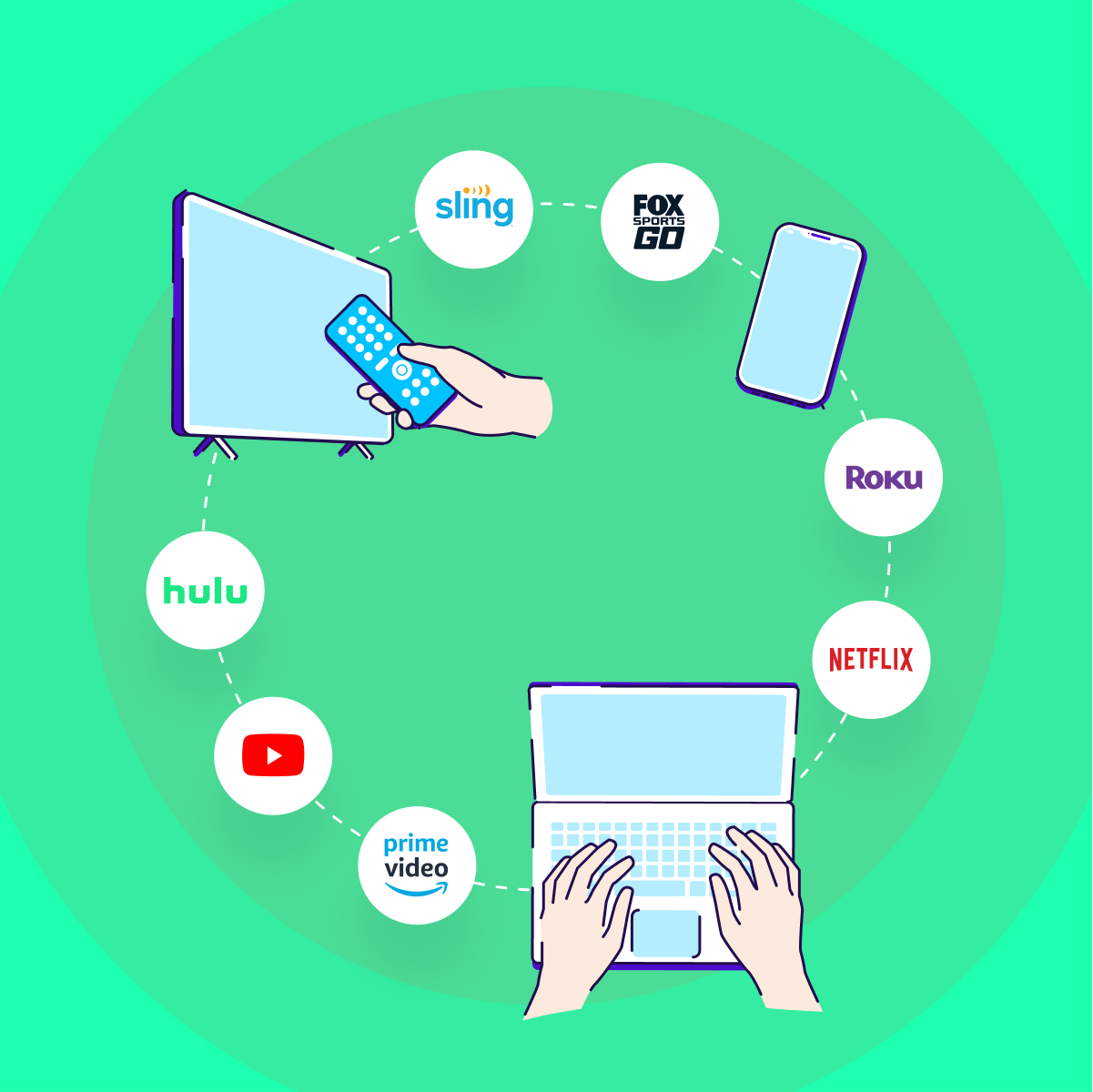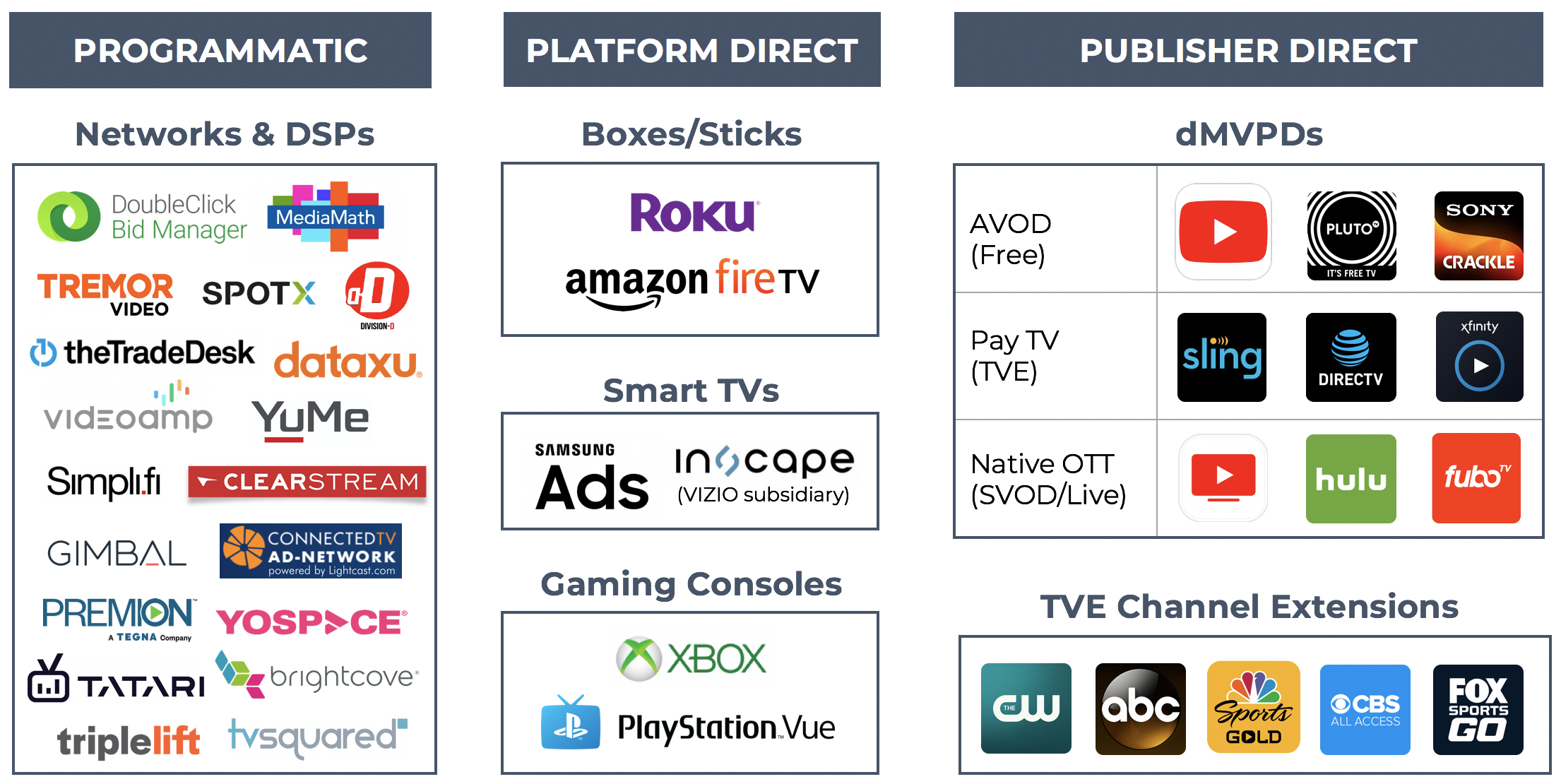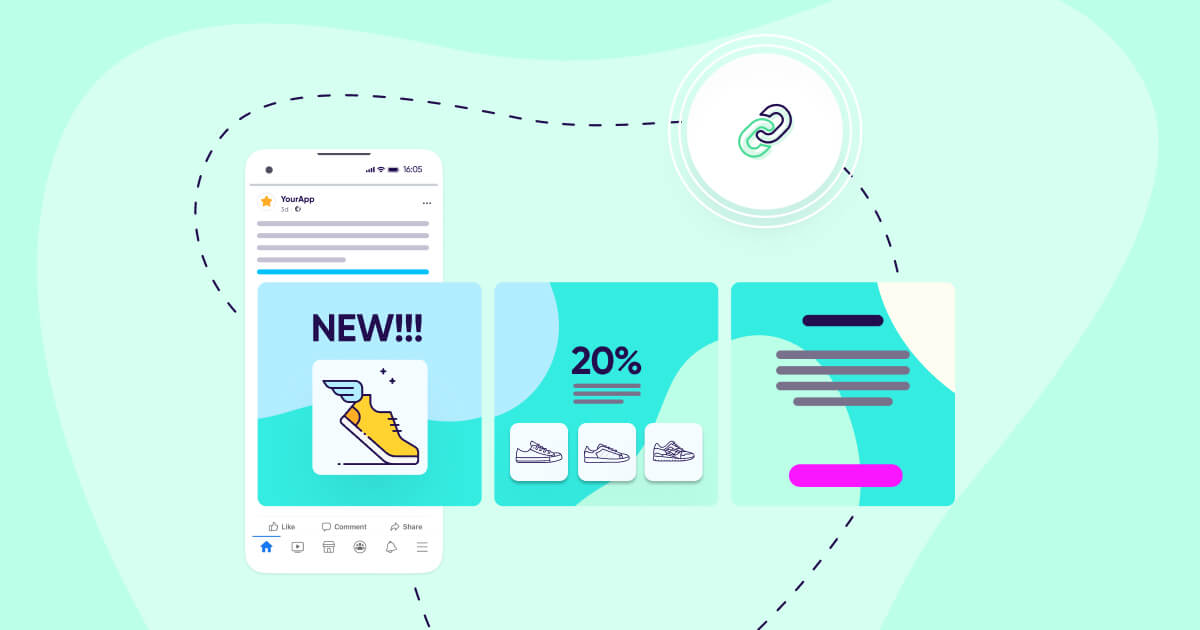
OTT media buying and test strategies


We introduced the advanced TV landscape in part 1 of our over-the-top (OTT) blog series, followed by an OTT / connected TV (CTV) measurement deep dive in part 2 and a feature on Amazon Fire TV in part 3.
In this post, we’ll be applying that knowledge to CTV advertising at large with a beginner’s guide to OTT media buying.
Perhaps the biggest takeaway so far has been the growth potential for OTT and what that means for digital performance advertisers. Although OTT represents less than 5% of total U.S. TV ad spend, linear TV spend has been declining since 2016 (according to MAGNA & eMarketer). Conversely, OTT ad spend grew by 40%+ last year and can be found in at least 80% of U.S. WiFi households (according to MAGNA & comScore).
The emergence of OTT and addressable TV has opened the playing field for TV buying by lowering minimum spend requirements, increasing targeting options, and providing a more seamless path for cross-screen remarketing.
However, despite its potential, one common misconception is that the performance of OTT ads on CTV will be in line with digital.
In actuality, CTV is more of an upper-funnel tactic than a performance lever.
Typical CTV video CPMs fall in the $20-40 range and true cross-screen / multi-touch attribution is still somewhat limited, which means the effective CPI or CPA of a CTV campaign will likely be much higher than that of desktop or mobile. That being said, CTV can be very impactful for driving awareness and cross-screen adoption of OTT apps if used in the right way.
OTT media sources
In general, there are three ways to access OTT inventory through addressable buying: programmatic, platform direct, and publisher direct.

DSPs and ad networks are often the easiest places to start for those new to CTV due to their wide reach across platforms, lower minimum spends, cheaper cross-screen blended CPMs (i.e. CTV + mobile video), sophisticated audience segmentation, and advanced reporting options (e.g. platform/publisher-level reporting + cross-device graphs).
Although 3rd party data and private marketplace (PMP) deals can offer a variety of niche targeting options, targeting typically cannot be guaranteed at the program or platform level.
Programmatic ad formats are limited to non-clickable video (i.e. mid-roll) for now, as OTT platform providers hold the keys on homepage placements and clickable display formats.
Targeting considerations
Beyond media source considerations around inventory, pricing and measurement, targeting is a pivotal part of the OTT media planning process.
Traditional advertisers who typically focus on program-based buying may want to consider more nuanced targeting to align OTT with digital media.
For mobile performance advertisers who are used to run-of-network (RON) targeting with CPI partners, it’s important to remember that OTT is limited to CPM and flat-fee pricing (no CPC/CPI options, as far as we are aware).
Integrating 1st party data from your DMP or MMP (e.g. AppsFlyer) for lookalike audiences and retargeting is a quick win to increase target relevancy for free. It may also help to add a few basic 3rd party filters, depending on the cost. Here are a few options to consider for your OTT targeting strategy:
- Platform Targeting
- Work directly with the OTT platform provider to guarantee OS targeting
- Behavioral Targeting
- Lookalike (1st party data)
- Psychographic/Demographic (2nd/3rd party data)
- TV-centric DMPs and data providers like Samba TV, Inscape, Alphonso and Tru Optik pull from a network of smart TVs to target users based on viewing data across screens
- Mobile user data is connected to CTV through Automatic Content Recognition (ACR), a technology which recognizes what is being watched on CTV by tapping into the microphones on smartphone devices
- Interest-based profiles can be expanded programmatically by combining web and app install/usage data—pulling audiences from DMPs like eXelate, Data Alliance, Twine, PushSpring, Skydeo, Datalogix, Neustar, BlueKai, Epsilon, etc.
- Content Targeting
- OTT App Groupings (10+ apps)
- As an extension of interest-based targeting, working with OTT platform providers and/or PMP deals to place your ads in a specific group of apps can be a great way to reach a particular type of user based on the type of
content they watch (e.g. AVOD channels for free app marketers)
- As an extension of interest-based targeting, working with OTT platform providers and/or PMP deals to place your ads in a specific group of apps can be a great way to reach a particular type of user based on the type of
- OTT App Specific (1 app/publisher)
- As mentioned previously, you’ll need to work directly with OTT app publishers to guarantee premium positioning and/or high SOV in specific TV programs or channels (typically at a higher cost)
- OTT App Groupings (10+ apps)
- Retargeting
- Work with OTT publishers or programmatic partners to drive awareness on OTT, then retarget users on mobile/web to drive acquisition
OTT use cases & test strategies
OTT can be relevant to many types of advertisers—from mobile app owners to new OTT/mobile app owners to big brands who are already spending on linear TV, each has its own goals and distinctions to consider.
For the purposes of giving a single and detailed example on how to devise your first OTT media test strategy, we’ve chosen to focus on the middle category: New OTT/mobile app owners.
Even if you don’t fall into this category, the rationale described in each of the two scenarios below may give you inspiration that can be adapted to your specific use case.
Let’s say you manage a free, ad-supported TV content service across desktop, Android, iOS, Roku and Fire TV that just launched last year.
You have a limited budget and strict acquisition performance goals, with little room for upper-funnel testing.
Thus far your paid media efforts have been focused exclusively on mobile, where you are able to achieve a $1-3 CPI. Your analytics team tells you that user LTV is 6x higher on TV screens and that TV users become stickier and more frequent viewers, but you also know that TV advertising can be very expensive.
Phase 1: Goal setting
As a first step, you’ll want to understand your options for OTT attribution.
Setting up S2S/SDK integration with each of your OTT platforms is crucial, and AppsFlyer can help simplify this process.
Beyond that, if you’re not already working with a marketing cloud platform, you’ll need to weigh the pros and cons of advanced cross-screen analytics vs. cost.
There are essentially two paths you can take here:
- Platform Direct with Same-Device Attribution
To take the path of least resistance, start by focusing on one OTT operating system where you predict the most potential: Roku or Fire TV. This will allow you to test a variety of ad formats to understand video vs. display efficiencies on CTV. You can also retarget these users on mobile, e.g. via Amazon DSP - Programmatic with Cross-Screen Attribution
Establish cross-platform benchmarks by working with a DSP to test multiple OTT operating systems against mobile. This typically requires more budget and might be less efficient initially, but if you’re willing to do this, you’ll get more granular learnings in a much quicker timeframe that will help you quickly decide which areas to invest in long term
Phase 2: Attribution setup
The minimum measurement requirement under both scenarios is site-served reporting, but of course, we highly recommend working with an MMP to streamline your reporting process with advanced analytics (e.g. in-app event measurement, custom attribution windows, ROI/LTV reporting, etc. with AppsFlyer).
You also have the option of integrating a marketing cloud platform for additional visibility on probabilistic mobile/web attribution from OTT TV.
Some DSPs are able to offer cross-device graphs for free (scenario B), but there are advantages of working with specialist partners at an added cost.
Phase 3: Media planning and test setup
Platform Direct with Same-Device Attribution
- Partner Selection: Choose the platform where you want to focus your growth goals, or RFP all OTT platform providers for a more vetted comparison (after all, there are only a few to choose from)
- Media Allocation: Choose a variety of ad formats with spend levels that fit within your budget. Some of the custom display placements have hefty minimum spends, so if you choose to include those in your test you may want to hold off on mobile/web retargeting until a later date
- Targeting: Determine your audience strategy
- RON targeting is a great place to start if the partner can give you content- or program-level reporting; otherwise, consider testing RON vs. a narrower audience on at least one ad placement.
Programmatic with Cross-Device Attribution
- Partner Selection: Select a single, broad-reaching programmatic partner who can provide:
- Ample video inventory across devices and platforms at a fair price
- Placement-level reporting catered to your needs (e.g. creative, OS, IP, timestamp, completion rate, app category, app, geo, audience segment, user agent, IDFA / G-AID, cookie)
- Media Allocation: Determine the minimum number of installs and time required for statistical significance to set your initial test budget for media allocation
- Forecast CPI conservatively for CTV, understanding that actual eCPI may be hard to accurately predict (e.g. $75-300+)
- Allocate minimum media across both OTT and mobile in order to understand the overlap of those exposed to each platform
- Targeting: Determine your audience strategy
- RON targeting on CTV will achieve the lowest CPM and CPI
- Replicate your usual targeting strategy for mobile (i.e. RON) or consider a minimum audience filter such as CTV/OTT ownership
Phase 4: Post-campaign analysis and optimization
- After your campaign runs, analyze the data to understand factors such as:
- CPI benchmarks by OS
- Impact of multiple ad exposures on acquisition and LTV across devices
- Best performing content (ad creative, program, content category, etc.)
- Depending on these results, plan your next OTT test:
- Optimize your measurement strategy
- Refresh or refocus your ad creative allocation
- Explore new segments with the partner used in your first test, or RFP additional partners to hone in on the most promising segments for success (e.g. OTT platform provider expansion, specific ad formats, top app publishers, expanded programmatic inventory, retargeting, etc.)




